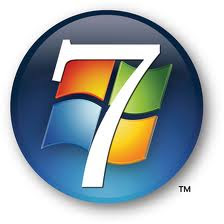Thursday, August 12, 2010
Online Practice Cogat
Windows 7 is the latest version of Microsoft Windows line of operating systems produced by Microsoft Corporation. This version is designed for use in PCs, including desktops in homes and offices, laptops, tablet PCs, netbooks and media center computers. [2] The development of Windows 7 was completed on July 22, 2009, being then confirmed official sale date for the October 22, 2009 along with its equivalent for Windows Server 2008 R2. [3]
Unlike architectural leap features which suffered its predecessor Windows Vista over Windows XP, Windows 7 was designed as an upgrade incremental and focused on Vista and NT 6.0 kernel, allowing to maintain a certain degree of compatibility with applications and hardware on which it was already compatible. [4] However, among the goals for Windows 7 development was important to improve interface to make it more accessible to the user and include new features that make tasks in an easier and faster, while efforts would be made to achieve a more lightweight, stable and fast. [5] Several
presentations by the company in 2008 focused on demonstrating multi-touch capabilities, a redesigned interface along with a new bar task and a home networking system easy to use so-called Group Home, [6] in addition to major improvements in the overall team performance.
The development of this operating system began immediately after the release of Windows Vista. On July 20, 2007 revealed that the operating system was called internally by Microsoft as version "7." Until that time the company had stated that Windows 7 would support 32-bit platforms and 64 bits, [7] although the version for servers that share the same kernel (Windows Server 2008 R2, which happen to Windows Server 2008) would be exclusively 64 bits. [8]
On October 13, 2008 it was announced that "Windows 7", besides being one of many code names, would be the official name of this new operating system. Mike Nash said this was because Windows 7 is "aimed at simplicity, and the name should reflect that."
Already by January 7, 2009, the beta version was released to Technet and MSDN subscribers. On 9 January, briefly enabled the general public via direct download on the official website, but there were problems with the servers, which forced to withdraw the possibility of discharge until hours later, after solving the problem by adding more servers. For these mishaps, Microsoft changed the initial discharge limit of 2.5 million people as an excuse for the delay problem, and created a new numerical limit but would not date until February 10, 2009.
On 5 May the Release Candidate released in 5 languages, including English. Was available for download until August 20, 2009.
On June 2, Microsoft announced that the global output of Windows 7 would take place on October 22 [9].
On 24 July, Microsoft executives Steve Ballmer and Steven Sinofsky announced the completion of the process development with compilation of the RTM, for the distribution of Windows. [10]
Another issue involved in the development of this system, thanks to comments from users, minimize the intrusion was enabling the personalization of Control User Accounts, as it was considered annoying in Windows Vista due to its constant alerts on simple maintenance actions such as invoking operating system functions [11].
In a letter written by the vice president of business Windows of Microsoft Corporation, William Veghte, shall be disclosed separately on the vision that was for Windows 7:
We learned a lot through the feedback you have shared with us about Windows Vista, and that feedback plays an important role in our work to Windows 7. We have said they want a more structured and predictable schedule for the release of Windows ... ... Our approach to Windows 7 is to build on the same architecture background Windows Vista Service Pack 1, so the investments you and our partners have made in Windows Vista continue paying off with Windows 7. Our goal is to ensure that the migration process from Windows Vista to Windows 7 is transparent [12].
INFORMATION THROUGH WIKIPEDIA.
Subscribe to:
Post Comments (Atom)

0 comments:
Post a Comment